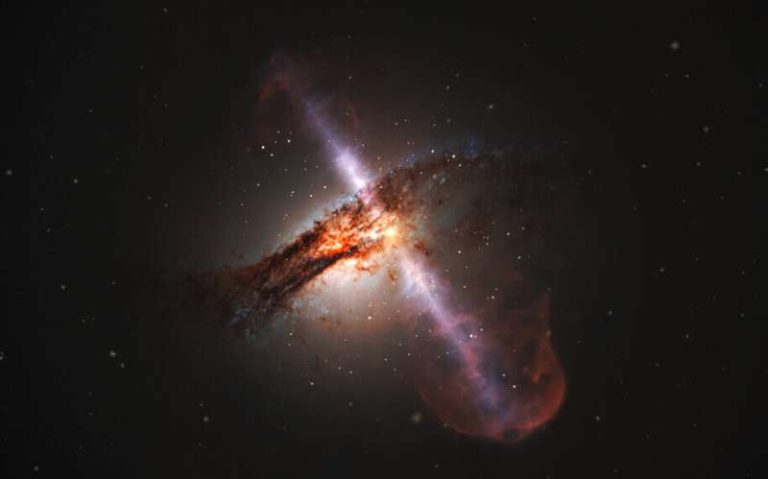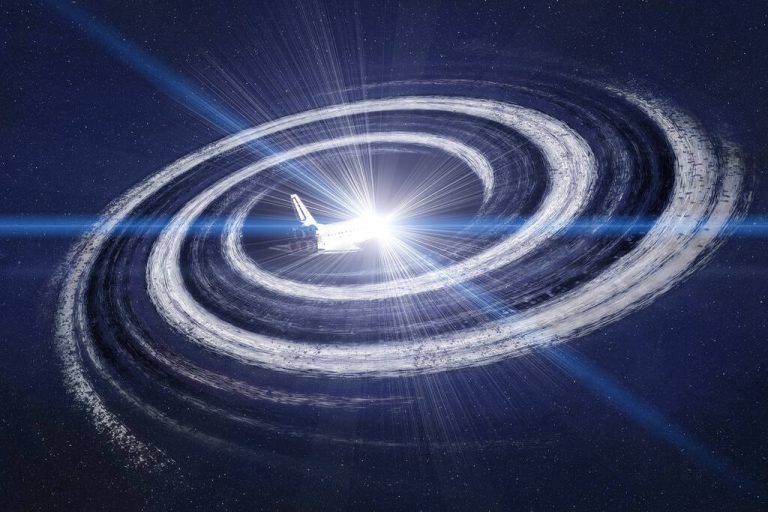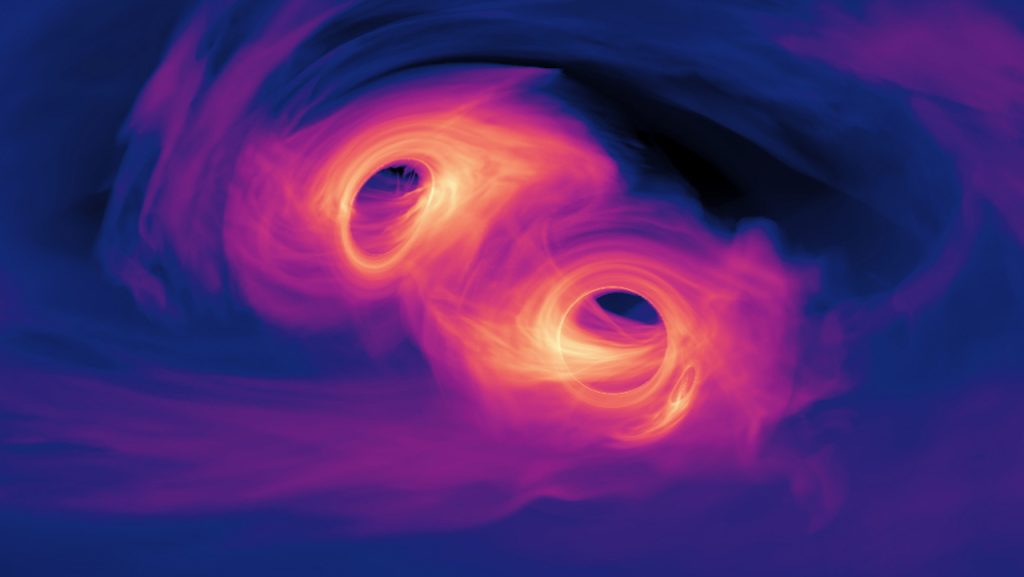The Universe: Exploring Our Unique Place in Space – Are We in a Special Part?
The universe, governed by the Cosmological Principle, appears uniform on large scales despite our limited exploration beyond the Solar System. Recent research using weak gravitational lensing and data from the Euclid telescope offers a novel method to test this fundamental assumption. By examining tiny distortions in light caused by mass distribution, scientists hope to uncover potential anomalies in the cosmic structure that could hint at variations in density far beyond our immediate observational reach.
Summary:
- Cosmological Principle: Assumes uniformity and isotropy on a large scale
- Weak Gravitational Lensing: A tool for detecting subtle distortions in distant galaxies
- Euclid Mission: European Space Agency initiative mapping billions of galaxies
- Anisotropy Studies: Investigations to uncover any directional differences in the universe’s expansion
- Astrophysical Research: Ongoing efforts to verify the fundamental assumptions of modern cosmology
- Interdisciplinary Approach: Integrating theoretical models, computer simulations, and observational data
- Technological Innovation: Use of advanced telescopes and analytical techniques in cosmology
- Cosmic Evolution: Insights into the arrow of time from the Big Bang to the present epoch
- Research Collaboration: International teams contributing to breakthroughs in astrophysics

Introduction
For many years, the Cosmological Principle has been a key idea in astrophysics. This principle claims that the universe is uniform on a very large scale. “Homogeneous” means that the universe looks similar everywhere. “Isotropic” means it looks the same in every direction. So, wherever you are, the universe’s structure and behavior are consistent.
We can only explore directly within our own Solar System. Because of this, much of the universe remains a mystery to us. The principle is useful because it makes many complex calculations and models simpler. This is especially true for models related to the Big Bang theory.
However, scientists are now using new techniques and tools. With these, they start to wonder if the universe might vary slightly when looked at on even larger scales.
The Cosmological Principle and Its Importance
The Cosmological Principle is very important in modern cosmology. It is more than just an idea or assumption. This principle states that the laws of physics are the same everywhere in the universe. Scientists use this idea. It helps them create models to predict how cosmic structures behave and change over time. Cosmic structures include things like planets, stars, and galaxies. This leads to beautiful theories. These theories explain the universe’s expansion. They also explain how galaxies form and how matter and energy spread out.
Proving the Cosmological Principle completely is difficult. We mostly observe a tiny part of the universe. Even with advanced telescopes and observatories, we cannot fully measure if the universe is uniform everywhere. This challenge has led to new ideas. These ideas aim to test the principle in different ways. Scientists use indirect methods because direct observation is hard.
Testing the Principle with Weak Gravitational Lensing
One promising technique to test the Cosmological Principle is through weak gravitational lensing. This phenomenon occurs when the gravitational field of matter (both visible and dark) slightly bends the light from distant galaxies. The resulting distortions are incredibly subtle, but by carefully analyzing these effects, scientists can infer the distribution of mass across vast cosmic distances.
Researchers propose that by comparing two types of shear—E-mode shear and B-mode shear—they can identify potential anisotropies in the universe. E-mode shear is expected in a uniformly expanding universe, while any significant presence of B-mode shear could hint at deviations from isotropy. The detection of large-scale B-modes, correlated with E-mode shear, would be a significant indicator that the universe’s expansion might not be entirely uniform.
The approach requires extremely precise measurements and sophisticated data analysis, and it leverages advanced computer simulations to predict the expected outcomes. The team has modeled an anisotropic expansion and compared it with the expected signatures in the weak lensing signal, providing a roadmap for future observational tests.
The Euclid Telescope: A Game Changer
The Euclid telescope, an ambitious project by the European Space Agency, is designed to map the large-scale structure of the universe with unprecedented precision. Launched in 2023, Euclid aims to explore the enigmatic realms of dark matter and dark energy. By observing billions of galaxies, the telescope will collect data that is critical for testing the Cosmological Principle.
Euclid’s observations will help scientists identify subtle differences in the cosmic structure that could suggest an anisotropic expansion of the universe. This data is essential for understanding whether the universe behaves uniformly across all directions, or if certain regions exhibit slight variations in density and expansion rate.
The implications of these findings extend far beyond theoretical physics. A deviation from the Cosmological Principle could necessitate revisions to many established cosmological models and prompt a re-evaluation of our understanding of the universe’s history and future.
| Parameter | Value/Description | Details |
|---|---|---|
| Mission Launch Year | 2023 | Euclid was launched by the European Space Agency. |
| Primary Objective | Mapping dark matter and dark energy | Aims to study the large-scale structure of the universe. |
| Observational Reach | Billions of galaxies | Provides a comprehensive map of cosmic structures. |
| Data Precision | High-resolution imaging and spectroscopy | Enables detailed analysis of weak gravitational lensing effects. |
Unraveling Cosmic Anisotropy
While the standard model of cosmology suggests that the universe is isotropic, there have been hints of possible anomalies. Some studies have observed conflicting measurements of the universe’s expansion rate when comparing the cosmic microwave background with other cosmological data. These discrepancies have led researchers to explore whether the universe might exhibit slight anisotropies.
By simulating the effects of an anisotropic universe, astrophysicists have been able to predict how these variations would manifest in weak gravitational lensing data. Their models indicate that if the universe were expanding unevenly, the resulting lensing signal would contain specific signatures in the form of enhanced B-mode shear. Confirmation of such signatures would not only challenge the Cosmological Principle but also provide new insights into the distribution of dark matter and dark energy.
| Aspect | Cosmological Principle | Observational Insights |
|---|---|---|
| Homogeneity | Assumes uniformity on a large scale | Tested via distribution of galaxies and matter structures. |
| Isotropy | No preferred direction in the universe | Examined through E-mode and B-mode shear in gravitational lensing. |
| Impact on Models | Simplifies cosmic evolution models | Anomalies may require significant revisions in current theories. |
The potential discovery of anisotropic expansion would have profound implications. It would suggest that our location in the universe might not be as typical as once thought, and it could lead to new theories about the formation and evolution of cosmic structures. While the current evidence is preliminary, the upcoming data from Euclid is eagerly awaited by the scientific community.
Implications and Future Prospects
If future observations confirm the presence of anisotropies in the universe, the ramifications for cosmology will be substantial. The standard models, built on the assumption of uniformity, may need to be revised to account for these newly discovered variations. This could affect our understanding of the Big Bang, the evolution of galaxies, and the ultimate fate of the cosmos.
The success of weak gravitational lensing as a tool for testing the Cosmological Principle also opens up new avenues for research. As techniques and technologies improve, astronomers may uncover even more subtle features of the universe that have been hidden from view. The interplay between theoretical models and observational data will continue to drive progress in our understanding of the cosmos.
Furthermore, this research underscores the importance of interdisciplinary collaboration. Astrophysicists, data scientists, and engineers are working together to push the boundaries of what we know about the universe. The Euclid telescope represents not just a technological marvel, but also a symbol of human curiosity and our relentless pursuit of knowledge.
Fun Facts
- Cosmological Principle: A key assumption in cosmology suggesting the universe is uniform at large scales.
- Weak Gravitational Lensing: A subtle effect used to map the mass distribution in the universe.
- Euclid Telescope: Launched in 2023, it aims to explore dark matter and dark energy.
- Anisotropy: Any directional dependence in cosmic expansion challenges the idea of uniformity.
- Cosmic Microwave Background: Remnant radiation from the Big Bang that provides clues about the early universe.
Reference
Detailed information and further reading are available at EurekAlert!.




